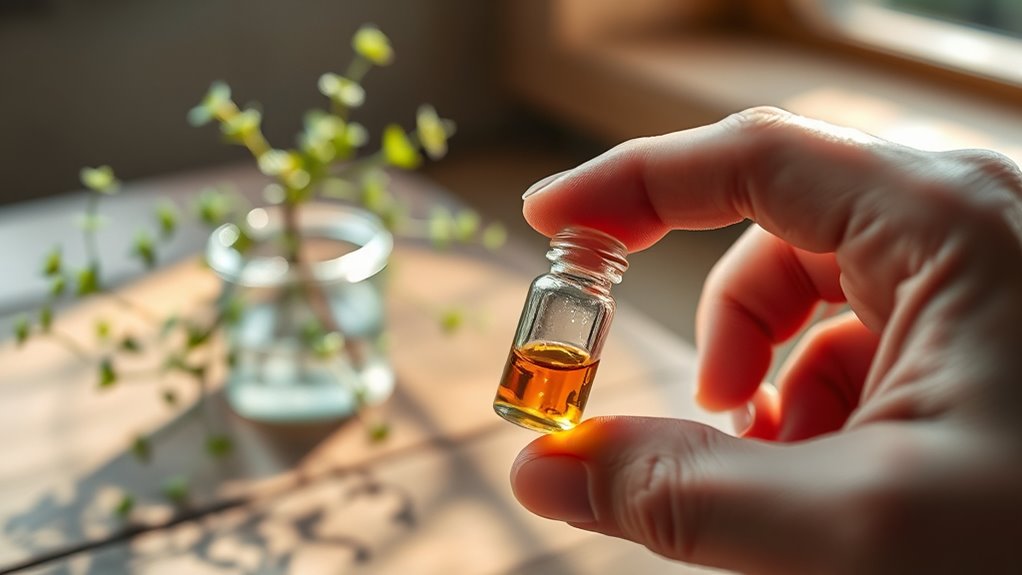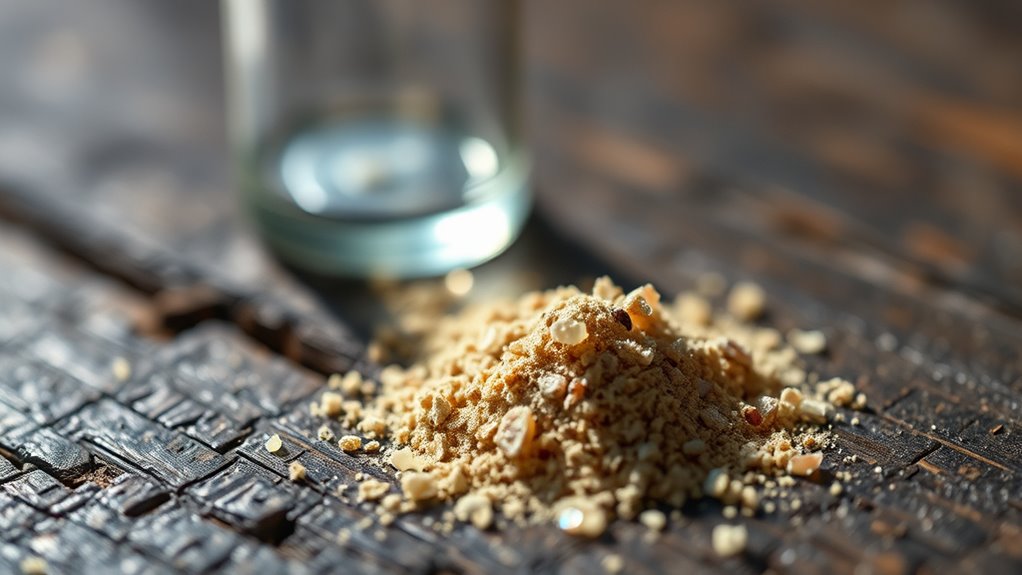Microdosing involves taking small amounts of psychedelics like LSD or psilocybin, designed to boost mental clarity, emotional health, and creativity without full hallucinations. Typically, you take about one-tenth to one-twentieth of a recreational dose every few days, monitoring your response closely. While many report positive effects, it is crucial to stay aware of legal considerations and potential risks, especially if you’re new to this. Continue exploring to discover effective, responsible ways to incorporate microdosing safely.
Key Takeaways
- Microdosing involves taking sub-perceptual amounts of psychedelics like LSD or psilocybin to enhance mood, focus, and creativity.
- Common schedules, such as dosing every three days, help prevent tolerance and monitor effects over time.
- Legal status varies; many psychedelics are controlled substances, so verify local laws and consider clinical or legal options.
- Risks include anxiety, sleep issues, and adverse effects, especially for individuals with mental health concerns or medication interactions.
- Responsible microdosing includes understanding dosage guidelines, creating a supportive environment, and consulting healthcare professionals.

Microdosing psychedelics involves taking small, sub-perceptual amounts of substances like LSD or psilocybin to enhance mood, focus, and creativity without experiencing full-blown hallucinations. If you’re considering this practice, understanding proper dosage guidelines is vital. Typically, a microdose is about one-tenth to one-twentieth of a recreational dose. For LSD, this means roughly 10 to 20 micrograms, and for psilocybin mushrooms, around 0.1 to 0.3 grams of dried mushrooms. These amounts are enough to produce subtle effects that can boost mental clarity and emotional well-being without impairing your daily functioning. It’s important to start low and gradually adjust, paying close attention to how your body responds. Many people follow a schedule, such as taking a dose every three days, to prevent tolerance buildup and monitor effects over time. Consistency and moderation are key to safe and effective microdosing. Additionally, understanding home improvement strategies can help create a comfortable environment that supports your mental health and well-being during this process. Legal considerations are a significant aspect you need to be aware of before starting. In most countries, psychedelics like LSD and psilocybin remain illegal, classified as controlled substances. Possession or use can lead to serious legal consequences, including fines or imprisonment. Even in regions where decriminalization or medical use is emerging, regulations vary widely, so you must research local laws thoroughly. Some individuals seek out legal avenues such as clinical trials or licensed therapeutic settings, where microdosing might be monitored professionally. However, these options are limited and often require specific qualifications or approvals. Never assume legality based on anecdotal reports or online communities; always verify the current legal status in your jurisdiction. Ignoring legal considerations can jeopardize your safety and freedom, so proceed with caution. In addition to dosage guidelines and legal considerations, you should also be aware of potential risks and interactions. Microdosing isn’t suitable for everyone, especially those with a history of mental health issues or who are on certain medications. Always consult with a healthcare professional before beginning any psychedelic regimen. Keep in mind that research on microdosing is still evolving, and while many report benefits, some may experience adverse effects like anxiety or sleep disturbances. Being informed and cautious helps you make responsible choices. Remember, the goal of microdosing is to enhance your well-being safely, so taking the time to understand proper dosages and legal boundaries is an essential part of your journey.
Frequently Asked Questions
Are Microdoses Legally Available Everywhere?
Microdoses aren’t legally available everywhere because of legal restrictions and regional differences. In some countries or states, psychedelics are decriminalized or legal for medical use, making microdosing possible. However, in many places, strict laws prohibit these substances, so you should check local regulations before considering microdosing. Always stay informed about the legal status in your area to avoid potential legal issues.
What Are Common Side Effects of Microdosing?
You might experience common side effects like mild anxiety, headaches, or nausea when microdosing. While potential benefits include improved mood and focus, the psychological effects can vary, sometimes leading to heightened anxiety or paranoia. It’s important to start with low doses and monitor your reactions. Keep in mind, everyone’s response is different, so be cautious and consult a healthcare professional if you notice adverse effects.
How Long Does It Take to See Effects?
Generally, you’ll notice subtle shifts within 1 to 2 weeks, but set your timing expectations realistically. Personal response variability means some may experience effects sooner, while others might take longer. Don’t rush or get discouraged if changes aren’t immediate. It’s a gentle journey, and patience helps you better understand how microdosing influences your well-being. Trust your experience and give it time to unfold naturally.
Can Microdosing Replace Traditional Therapy?
Microdosing isn’t a replacement for traditional therapy, but it does have therapeutic potential that can positively influence your psychological impact. It may help improve mood, focus, and creativity, but it doesn’t address deeper issues like trauma or complex mental health conditions. Always consult a mental health professional before considering microdosing as part of your treatment plan, as it’s best used alongside, rather than instead of, traditional therapy.
Is Microdosing Safe for Long-Term Use?
Did you know that a recent survey found that 78% of microdosers report improved mood? While microdosing might seem promising, its long-term safety isn’t fully established, and dependency risks remain a concern. You should be cautious, as prolonged use could lead to unforeseen health issues. Always consult a medical professional before considering microdosing regularly, and stay informed about ongoing research to understand potential risks better.
Conclusion
While some worry about the safety of microdosing, research suggests it’s a low-risk way to boost your well-being when done responsibly. If you’re cautious and informed, you can explore its potential benefits without the intense effects of full doses. Remember, it’s not a miracle cure, but many find it a helpful tool for enhancing creativity, focus, and mood. Give it a try with proper guidance—you might just discover a new way to improve your daily life.









